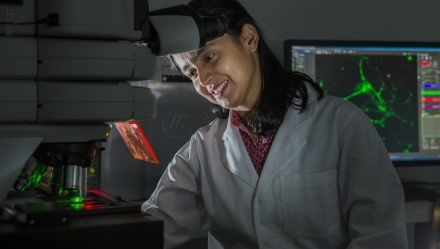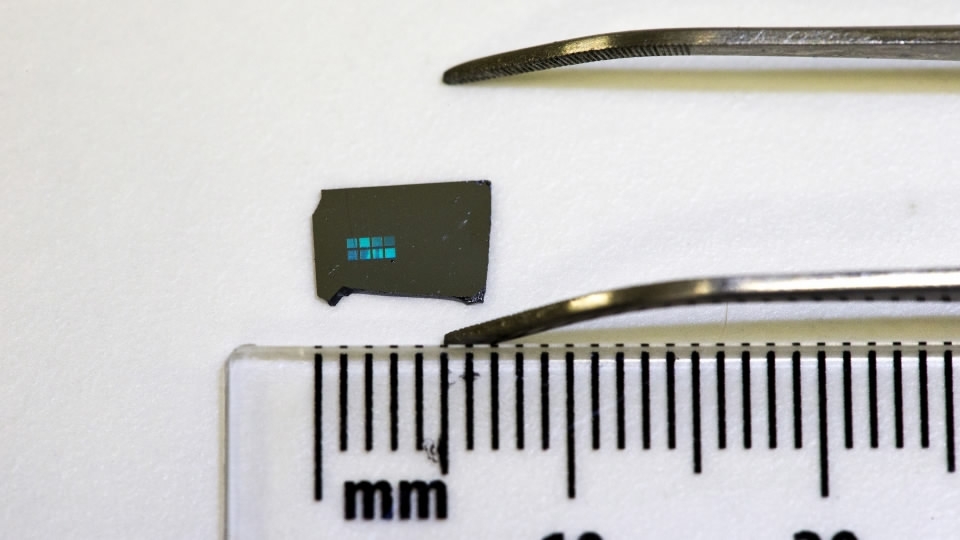Australian scientists have developed a material that allows brain cells to grow and form predictable circuits on a semiconductor wafer, a breakthrough they say may help with developing prosthetics to be used in the brain to substitute or repair the functions of damaged tissue.
Australian National University announced its researchers’ “brain on a chip” on Monday after their work was published in peer-reviewed journal Nano Letters.
A team from the university’s Research School of Engineering grew mice brain cells on a semiconductor wafer patterned with nanowires, which act as a scaffold to guide the growth of brain cells.

Dr. Vini Gautam said the scaffold provides a platform to study the growth of brain cells and how they connect with each other. /ANU Photo
The circuits grown on these scaffolds proved to be functional and highly interconnected, meaning the “brain on a chip” can be used to understand how neurons in the brain form computing circuits and eventually process information, according to lead researcher Dr. Vini Gautam.

The tiny semiconductor chip used in the research. /ANU Photo
“Unlike other prosthetics like an artificial limb, neurons need to connect synaptically, which form the basis of information processing in the brain during sensory input, cognition, learning and memory,” project group leader Dr. Vincent Daria explained.
“We were able to make predictive connections between the neurons and demonstrated them to be functional with neurons firing synchronously,” he said.











